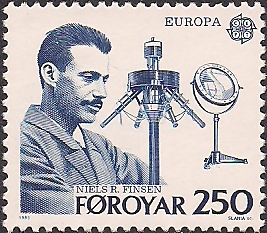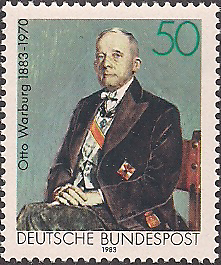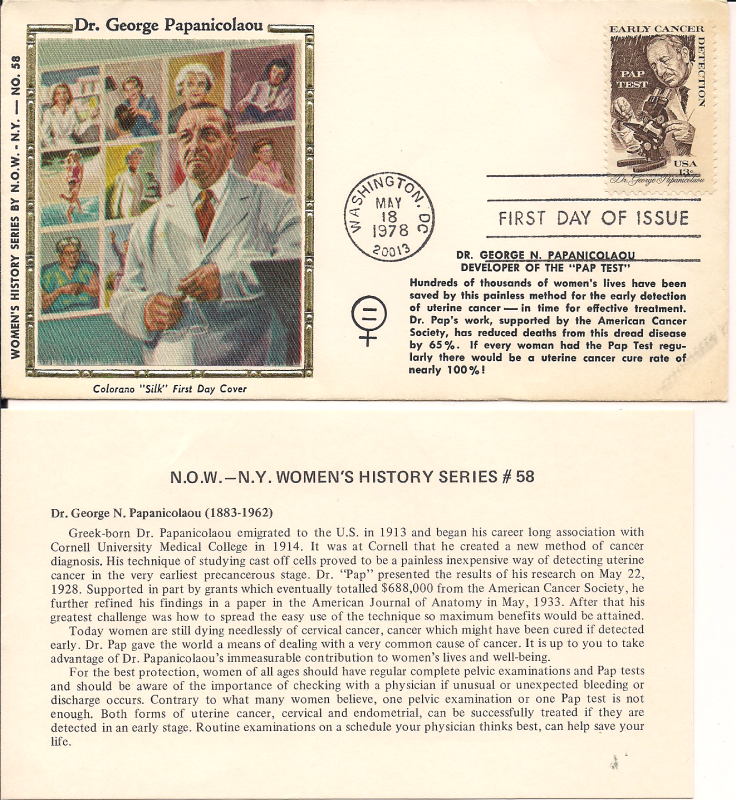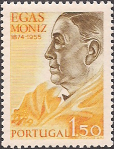With almost immediate certainty and in all likelihood, on these following pages there are individuals depicted that until now were unknown to most people today. Yet these individuals were selected by the country’s postal authority to be commemorated on a postage stamp or what some people refer to as miniature works of art.
An objective to strive for when writing about people from the past that have had an influence or impact on our lives and society is to bring to the forefront, perhaps remove from obscurity those individuals that until now have been unheralded. Let us begin with a brief introduction on the format for this post. This author thought a good and equitable approach would be simple: alphabetical order by country of notoriety and perhaps birthplace. For oftentimes, the country of birth does not always depict the accomplishments of the people that achieve fame or recognition. Sometimes the country that realizes and benefits from the individual’s success or achievements will highlight and recognize this by the issuance of a commemorative postage stamp. {Author’s Note: introducing in this issue for the images of philatelic material will be the addition of stamp catalog reference numbers. In philately, there are different catalogs that list stamps issued by postal authorities throughout the world. The main reference catalogs used here are Scott, Stanley Gibbons and Michel.}
Australia

Australia, 1995, SG #1552, Father Joseph Slattery, Thomas Lyle, Walter Drowley Filmer
One of the few countries to recognize a group of people for a major achievement where the group worked separately and individually, this time even in different locales. To this day the accomplishments of these 3 people are disputed. Not the fact that the events occurred, but the claim of who did what first, and who should receive credit for being the first in Australia to perform medical radiography. Australia Post decided the most equitable way was to depict all three on the stamp that coincided with the 100 year anniversary of Röntgen’s discovery.
Stamp showing Walter Drowley Filmer, Joseph Slattery and Thomas Lyle. Issued on 7 September 1995 to commemorate the three pioneers of X-ray technology in Australia.
Brazil

Brazil, 1963, SG #1092, Dr. Álvaro Alvim
Álvaro Alvim, a physician and pioneer radiologist in Brazil. Alvim introduced radiography to Brazil. He studied with the Curies in Paris. He performed the first radiograph of xiphopagous or conjoined twins in the world. Alvim was known as the martyr of Brazilian medicine. The dedication to his work is depicted on the stamp as evidenced by what remains of his hands, for he lost several fingers due to his work with X-rays.
Canada

Canada, 1991, Scott #1302, Jenny Kidd Trout, first woman physician licensed to practice medicine in Canada, an early practitioner of electrotherapy and galvanic baths.

Canada, 1981, Scott #879, Emily Stowe (NYMC), first woman physician in Canada (licensed in 1880, 5 years after Trout was licensed)
For Canada, two women of significance are featured. These women were forced to pursue their medical education in the United States, as they were refused entry into medical school in Canada. Jenny Kidd Trout completed her medical degree at Women’s Medical College in Pennsylvania in 1875. Emily Stowe attended New York Medical College (NYMC) and received a medical degree in 1867. While in New York, Stowe met Susan B. Anthony and was introduced to the women’s suffrage movement. Stowe would become a significant contributor to women’s suffrage in Canada. Stowe and Trout were required to receive additional training in Canada before a license to practice medicine in Canada would be granted. Stowe and Trout were the first women admitted to the Toronto School of Medicine. However, Stowe refused to sit for her exams due to the hostile treatment encountered from the all-male faculty and students. Stowe was granted a license to practice medicine from the College of Physicians and Surgeons of Ontario in 1880.
Denmark

Faroe Islands, Europa, 1983, Scott #95, Niels Ryberg Finsen
Niels Ryberg Finsen was a Faroese physician and scientist of Icelandic descent. He was awarded the Nobel Prize in Medicine and Physiology in 1903 “in recognition of his contribution to the treatment of diseases, especially lupus vulgaris, with concentrated light radiation, whereby he has opened a new avenue for medical science.” Finsen was an early pioneer in phototherapy. Stamp depicts examples of equipment utilized in phototherapy.
France

France, 1957, Scott #822, Antoine Béclère
Antoine Béclère, virologist, immunologist, a pioneer in radiology. In 1897, he established the first laboratory of radiology in Paris at his own expense. He is known as the founder of French radiology. His contemporaries included Pasteur and Becquerel. In 1916, by application of ‘paquets de radium’, he successfully treated a young man with an abdominal metastasis after orchiectomy for seminoma; the metastases “melted like snow under sunshine.”
Germany



Wilhelm Conrad Röntgen, a German physicist, who, on 8 November 1895, produced and detected electromagnetic radiation in a wavelength range today that was known as X-rays or Röntgen rays, an achievement that earned him the first Nobel Prize in Physics in 1901. In his honor, the International Union of Pure and Applied Chemistry (IUPAC) named element 111, roentgenium after him.

Germany, 1994, Scott #1628, Hermann Ludwig Ferdinand von Helmholtz
Hermann Ludwig Ferdinand von Helmholtz, a German physician and physicist. In physiology and psychology, he is known for his mathematics of the eye, theories of vision, ideas on the visual perception of space, color vision research, and on the sensation of tone, perception of sound, and empiricism. In physics, he is known for his theories on the conservation of energy, work in electrodynamics, chemical thermodynamics, and on a mechanical foundation of thermodynamics. As a philosopher, he is known for his philosophy of science, ideas on the relation between the laws of perception and the laws of nature, the science of aesthetics, and ideas on the civilizing power of science.

Germany, 1983, Scott #1058, Otto Heinrich Warburg
Otto Heinrich Warburg, son of physicist Emil Warburg, was a German physiologist, medical doctor and Nobel laureate. He was awarded the Nobel Prize in Physiology in 1931. Warburg investigated the metabolism of tumors and the respiration of cells, particularly cancer cells. In 1924, Warburg hypothesized that cancer, malignant growth, and tumor growth are caused by tumor cells mainly generating energy (as e.g. adenosine triphosphate/ATP) by nonoxidative breakdown of glucose (glycolysis) and the subsequent recycling of the metabolite NADH back to its oxidized form, for reuse in the glycolytic cycle to complete the process (known as fermentation, or anaerobic respiration). This is in contrast to “healthy” cells, which mainly generate energy from oxidative breakdown of pyruvate. Pyruvate is an end product of glycolysis, and is oxidized within the mitochondria. Therefore according to Warburg, cancer should be interpreted as a mitochondrial dysfunction.
Greece

USA, 1978, Scott #1754, Georgios Nikolaou Papanikolaou
Georgios Nikolaou Papanikolaou (or George Papanicolaou), a Greek pioneer in cytopathology and early cancer detection, and inventor of the “Pap smear”. He first reported that uterine cancer could be diagnosed by means of a vaginal smear in 1928, but his work was not recognized until published, together with Herbert Frederick Traut, in the book Diagnosis of Uterine Cancer by the Vaginal Smear in 1943.
Portugal



Portugal, 1974, Michel #1269, 1270, 1271, Egas Moniz
Egas Moniz, António Caetano de Abreu Freire Egas Moniz, known as Egas Moniz, a Portuguese neurologist and the developer of cerebral angiography. He is regarded as one of the founders of modern psychosurgery, having developed the surgical procedure leucotomy—known better today as lobotomy—for which he became the first Portuguese national to receive a Nobel Prize in 1949 (shared with Walter Rudolf Hess). He also contributed to the development of Thorotrast for use in the procedure and contributed many lectures and papers on the subject. He is considered a pioneer in the field.

Portugal, 1999, #2626-2631, Francisco Gentil
Francisco Gentil, Francisco Soares White Gentil, a Portuguese physician, oncologist and professor. Gentil was a significant supporter for the creation of the Portuguese Institute of Oncology. Portugal included in this series 2 other individuals of significance in medicine.
South Africa

South Africa, 1996, Scott #955d, Allan MacLeod Cormack
Allan MacLeod Cormack, a South African American physicist who won the 1979 Nobel Prize in Physiology or Medicine (along with Godfrey Hounsfield) for his work on X-ray computed tomography (CT).
Spain


Spain, 2003, Scott #3204, Santiago Ramón y Cajal
Santiago Ramón y Cajal, a Spanish pathologist, histologist, neuroscientist and Nobel laureate. His original pioneering investigations of the microscopic structure of the brain have led him to be designated by many as the father of modern neuroscience. His medical artistry was legendary, and hundreds of his drawings illustrating the delicate arborizations of brain cells are still in use for educational and training purposes.
Switzerland

Switzerland, 1967, Scott #847, Emil Theodor Kocher
Emil Theodor Kocher, a Swiss physician and medical researcher who received the 1909 Nobel Prize in Physiology or Medicine for his work in the physiology, pathology and surgery of the thyroid. Among his many accomplishments are the introduction and promotion of aseptic surgery and scientific methods in surgery, specifically reducing the mortality of thyroidectomies below 1% in his operations.
Ukraine

Ukraine, 1995, Scott #154, Ivan Puluj
Ivan Puluj, Ivan Pavlovich Puluj, a Ukrainian-born physicist and inventor who was an early developer of the use of X-rays for medical imaging. Puluj did heavy research into cathode rays, publishing several papers about it between 1880 and 1882. As a result of experiments into what he called cold light Puluj developed the Puluj lamp which was mass-produced for some time. This device was also a primitive X-ray tube. He was among the first who worked with X-Rays and used them for medical diagnostics. Puluj is often referred to as the Röntgen of Ukraine and in some circles he is credited with the discovery of X-rays.
United States

USA, 1988, Scott #2188, Harvey Cushing
Harvey Cushing, an American neurosurgeon. A pioneer of brain surgery, he was the first person to describe Cushing’s disease. He is often called the father of modern neurosurgery.

USA, 1988, Scott #2180, Chester Carlson
Chester Carlson, an American physicist, inventor, and patent attorney. He is best known for having invented the process of electrophotography and was subsequently renamed xerography. So if you have ever made a Xerox copy, you can thank Carlson.

USA, 1959, Scott # 1138, Ephraim McDowell
Ephraim McDowell, an American physician and pioneer surgeon. The first person to successfully remove an ovarian tumor, he has been called “the father of ovariotomy” as well as founding father of abdominal surgery and in particular lithotomy (kidney stone removal).

USA, 1956, Scott #1080, Harvey W. Wiley
Harvey W. Wiley, Chemist, known as the “Father of the FDA”.





























